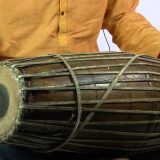Saareeraka Upanishad — 6
Aim SriSaaradaadevyai namah:
12—12—2017; Tuesday.
Aaarsha Saaradaa:- Saareeraka Upanishad—6.
Mantra : 7.
Manah, Buddhih, Ahankaarah, Chittam iti Antahkarana
Chatushtayam || 7 ||
There are four internal (subtle) instruments (within us). They are the Mind (the seat of all the palpable and the impalpable emotions), the Intellect ( the source of the process of intellection and the concomitant ideation), the Ego-consciousness (which is circumscribed to the wakeful as well as dream states), and the Faculty of Retentivity. (They are Manas, Buddhi, Ahankaara and Chittam).
Mantra : 8.
Teshaam Kramena Sankalpa—Vikalpa, Adhyavasaaya,
Abhimaana, Avadhaaranaa svaroopaah cha etay
vishayaah || 8 ||
The faculty of willing and unwilling is the property of the Mind. The function of determination or resolution is accomplished by the Intellect. The bent or propensity of relating or referring all objects to self (of wakeful or dream state) is the particularity of the Ego. The undertaking of registering and recollecting all tangible and intangible happenings of life takes place in the Faculty of Retentivity.
Mantra : 9.
Manah sthaanam galaantam, Buddheh vadanam
(vachanam), Ahankaarasya hridayam, Chittasya
naabhih iti || 9 ||
(Here the yogic centres are being referred to.). The Mind resides in Visuddhi Chakra. The Intellect dwells in between the Visuddhi and Aajna Chakras (from where Vaikhari vachanam is generated, originating and evolving from Paraa vaak). The Ego-Consciousness lives in the Anaahata Chakra. The Retentivity-Faculty abides in the Manipoora Chakra.
Swasti ||














manipoora, or manipooraka?
“—-నాభిదేశే తు మణిపూరం —–” అని
యోగశాస్త్రం ! ఐతే “మణిపూరకం ” అని కూడాచెపుతారు.
Thank you.
“- – -naabhi dese tu manipooram- – -“,
so says Yoga Sastra. But it is referred to as
“manipooraka” also.
I wonder how our Rishis dealt with such a
subtle and finer internal instruments of our
body. The transliteration of Slokas and their
explanation are excellently done. The places of the four subtle instruments and their relative yogic centers are clearly stated.
మేమెంత కృతజ్ఞతలు తెలిపినా చాలదు.అరటిపండు ఒలిచి చేతి లో పెడుతున్నావు. శా రీరక ఉపనిషత్తు లోని విశేషాలు మాకు ఇంత వివరంగా తెలుపుతున్నందుకు నీకు మరల మరల థన్య వాదాలు.